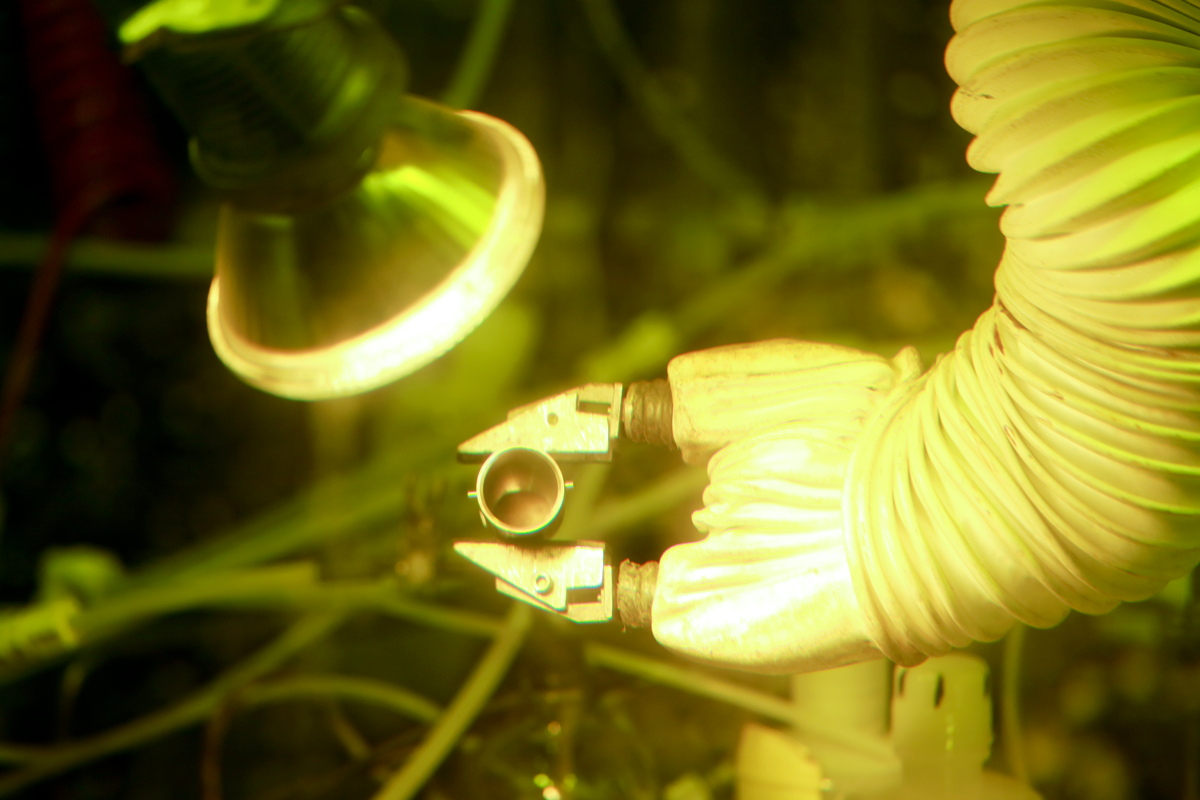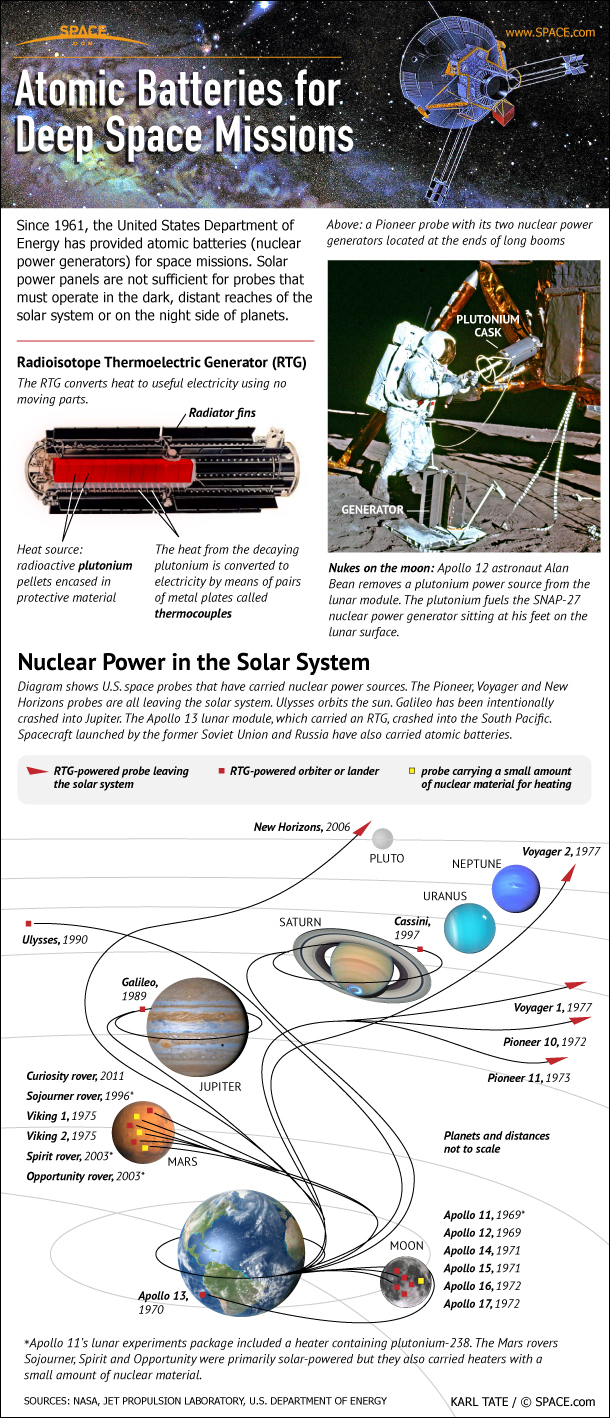Space Plutonium: US Once Again Producing Fuel for Deep-Space Missions

For the first time in 30 years, the United States produced an isotope of plutonium that powers NASA's deep-space missions.
A total of 50 grams of plutonium-238 was produced at the Department of Energy (DOE)'s Oak Ridge National Laboratory (ORNL) in Tennessee, in the first end-to-end demonstration of the material's production in the United States since the late 1980s. The small quantity is the first step in producing the energy source for future missions such as the Mars 2020 rover and the Jupiter Europa Orbiter.
"Once we automate and scale up the process, the nation will have long-range capability to produce radioisotope power systems such as those used by NASA for deep space exploration," Bob Wham, the leader of the plutonium-238 project at ORNL, said in a statement from ORNL. [Video: U.S. Makes Plutonium-238 for Deep-Space Exploration]
Today, only enough plutonium exists to meet NASA's planetary-mission requirements through 2030. The DOE will begin by supplying NASA with 300 to 400 grams of the material per year. Once the process is scaled up, the DOE will supply the space agency with an average of 1.5 kilograms each year, the statement said.
Exploring the solar system

Satellites and missions near Earth can rely on solar power or chemical batteries to keep them alive for years, but in the distant realms of space, the sun's rays are too faint and temperatures too extreme to keep things moving. Missions like NASA's New Horizons spacecraft, which buzzed Pluto in July of this year, require another source.
Plutonium-238 is an isotope, meaning it has a different number of neutrons than protons in its nucleus. Plutonium is a silver-white metal nearly 20 times denser than water, and through natural radioactive decay, it emits a steady heat. When that heat is used to power spacecraft, the plutonium is processed into a ceramic form; in event of a launch failure or reentry accident, the ceramic would break into large pieces rather than dispersing fine particles into the atmosphere. The material is unsuitable for weaponization.
Today, only 35 kg of plutonium-238 have been set aside for NASA missions, the statement from ORNL said. The amount of useable plutonium-238 in that supply is only enough to power two to three proposed NASA missions through the mid-2020s. Fulfilling the robotic missions identified in the 2011 planetary science decadal survey — including the Europa mission to visit Jupiter's icy moon — requires 38 kg.
Get the Space.com Newsletter
Breaking space news, the latest updates on rocket launches, skywatching events and more!
Nine NASA missions to date have used radioisotope power systems (RPS), including Pioneer and Voyager. NASA's Curiosity rover, currently exploring the surface of Mars, uses plutonium to stay powered at night. The Cassini mission orbiting Saturn and its moons uses the material to perform some stunning maneuvers. Plutonium has also been used on 10 spacecraft to keep instruments, structures and onboard systems warm.
Mars 2020, a rover that scientists hope will visit the Red Planet and collect samples to later be returned to Earth, is the next mission slated to use the plutonium isotope, although an official decision on the power source won't be made before 2019, according to a NASA report. The same study, which was prepared last June by the Applied Physics Laboratory at Johns Hopkins University in Maryland, noted that plutonium-238 will remain the preferred technical choice for a spacecraft requiring less than 1 kilowatt of electrical power. (New Horizons used less than a fifth of that.)
Producing power
In 2013, NASA began funding the DOE's Office of Nuclear Energy in an effort to revive the department's capability to make plutonium-238, a process that ended when the Savannah River Site in South Carolina stopped producing it in 1988.
Production begins when neptunium-237 is shipped from its storage place at Idaho National Laboratory to Oak Ridge. There, engineers mix it with aluminum and press the material into pellets, which are then irradiated by the High Flux Isotope Reactor. Radiation changes the material to neptunium-238, which quickly decays to plutonium-238, according to the statement from ORNL.
The irradiated pellets are dissolved, and a chemical process separates the plutonium from the leftover neptunium. The plutonium is converted to an oxide and shipped to Los Alamos National Laboratory, where the material will be stored until called on for a mission. The remaining neptunium is recycled and used to produce more plutonium-238.
With continued NASA funding, the process will begin to produce 300 to 400 grams per material before it is scaled up to reach the goal of 1.5 kg per year.
"With this initial production of plutonium-238 oxide, we have demonstrated that our process works and we are ready to move on to the next phase of the mission," Wham said.
Follow Nola Taylor Redd on Twitter @NolaTRedd or Google+. Follow us at @Spacedotcom, Facebook or Google+. Originally published on Space.com.
Join our Space Forums to keep talking space on the latest missions, night sky and more! And if you have a news tip, correction or comment, let us know at: community@space.com.

Nola Taylor Tillman is a contributing writer for Space.com. She loves all things space and astronomy-related, and enjoys the opportunity to learn more. She has a Bachelor’s degree in English and Astrophysics from Agnes Scott college and served as an intern at Sky & Telescope magazine. In her free time, she homeschools her four children. Follow her on Twitter at @NolaTRedd









